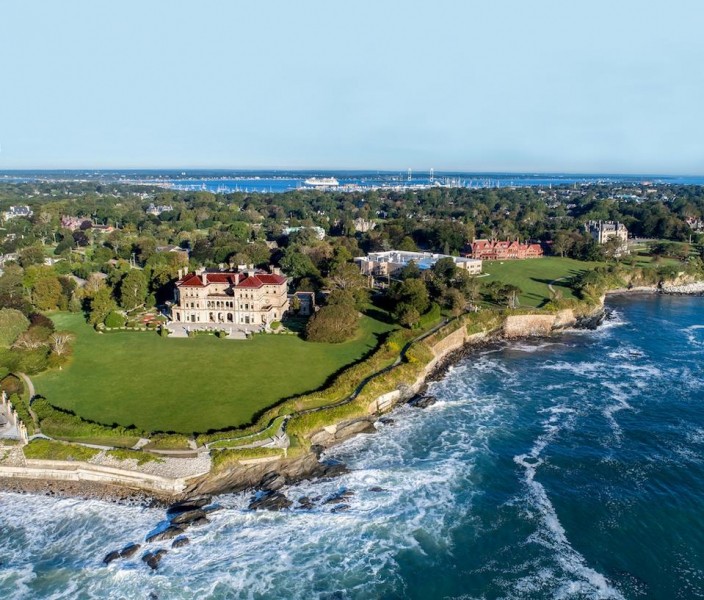Explore the Gilded Age in the U.S.
Newport, Rhode Island, stands as a key destination linked to the Gilded Age. In this picturesque coastal town, wealthy families once built their summer estates, showcasing the era’s opulence and grandeur.
Fans of the HBO Max series “The Gilded Age” get a taste of what New York looked like during this lavish period. But Newport isn’t the only place in the U.S. with connections to the Gilded Age. Across the country, you can find historical buildings and landmarks that reflect the spirit of this extravagant era.
Book your vacation with MWR LIFE and explore Newport’s magnificent Gilded Age heritage. Visit this historic town and immerse yourself in its stunning architecture, scenic views, and rich history!
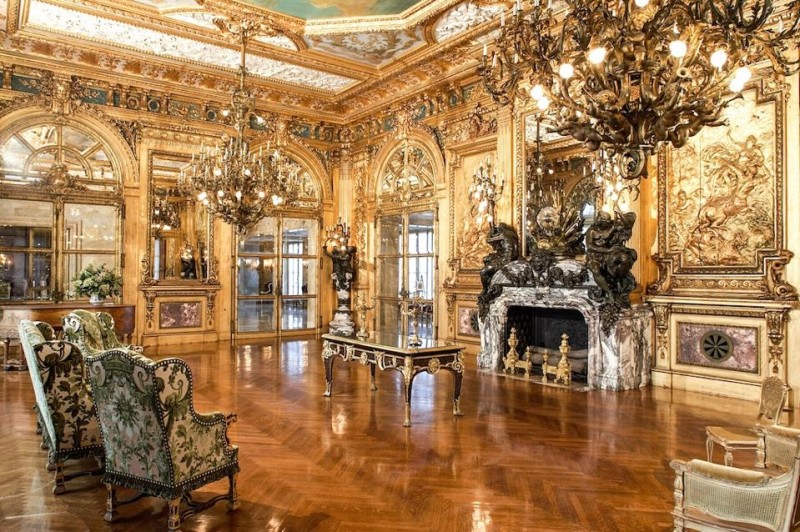
The Marble House was featured in the HBO Max series The Gilded Age, specifically as the Gold Room.
Newport, Rhode Island, is closely tied to the Gilded Age, with wealthy families owning summer homes in the area. The Newport Mansions, a group of historic estates, served as locations for various scenes in the show. These mansions, now museums, include The Breakers, Marble House, The Elms, Rosecliff, Chateau-sur-Mer, and Hunter House.
In The Gilded Age, the bedroom of Consuelo Vanderbilt at Marble House stands in for George Russell’s room, while Alva Vanderbilt’s bedroom doubles for Bertha Russell’s. In the current season, Peggy Scott and Dr. William Kirkland are seen walking along the Cliff Walk, a popular Newport spot.
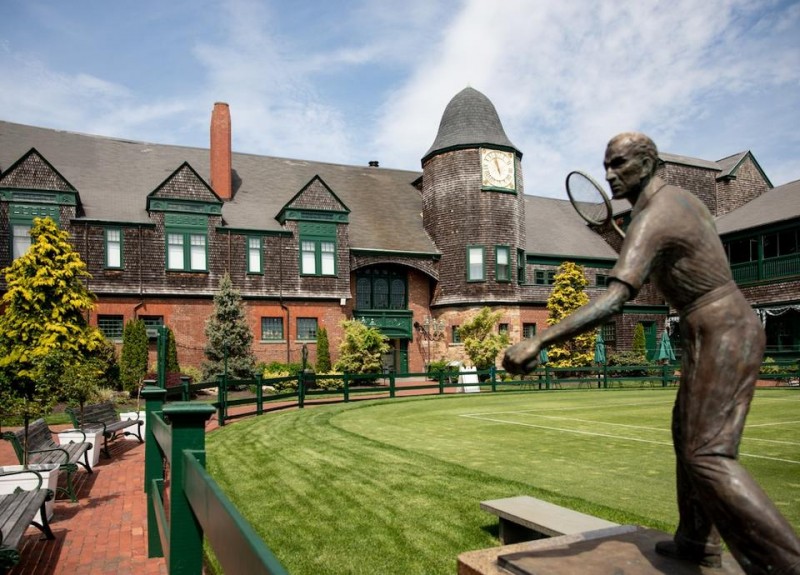
The International Tennis Hall of Fame in Newport, featured in The Gilded Age, is located within the Newport Casino, which opened in 1880 as a social club for the Gilded Age elite.
Explore this history through the Inside «The Gilded Age» Tours at The Mansions, available Fridays and Tuesdays from August 15 to September 30. Tickets should be purchased in advance.
Feel like a Vanderbilt at Hotel Viking, once a luxury destination. The Vanderbilt (Auberge Resorts Collection), a former Gilded Age estate turned hotel, retains its opulent charm.
Chicago, Illinois
Chicago’s Gilded Age architecture includes the Palmer House, a wedding gift from hotelier Potter Palmer to his wife. After being destroyed in the Great Chicago Fire, it was rebuilt and reopened in 1873. The hotel introduced innovative features like elevators, lightbulbs, and telephones in guestrooms.
The John J. Glessner House, now a National Historic Landmark, is an architectural masterpiece that influenced iconic architects like Louis Sullivan and Frank Lloyd Wright. Guided tours offer insight into its design, from the coach house to the courtyard.
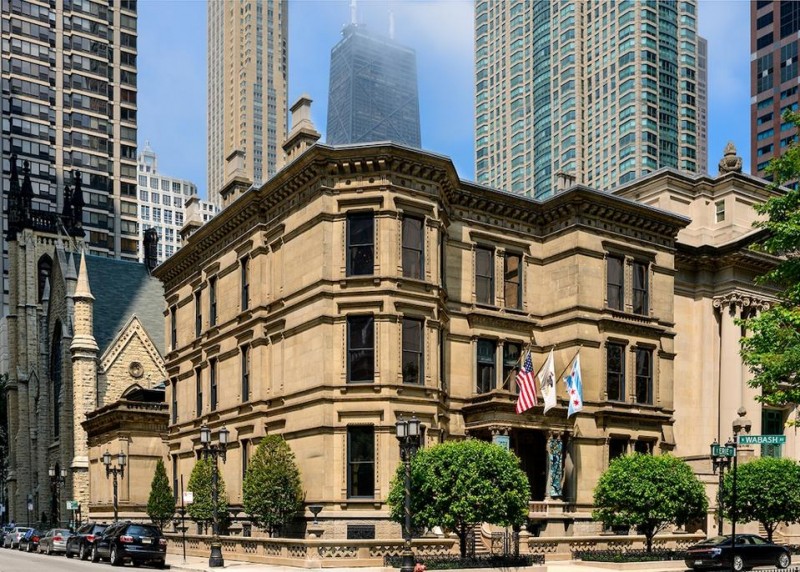
The Richard H. Driehaus Museum refers to the Chicago philanthropist who converted this former mansion into a museum.
The Richard H. Driehaus Museum is named for the Chicago philanthropist who restored the mansion to its Gilded Age splendor and converted it into a museum to preserve its legacy. Originally completed in 1883, for banker Samuel Mayo Nickerson, the house turned museum explores the art, architecture and design of the Gilded Age period and is open for guided tours and special exhibits.
The Rookery Building was once one of the tallest buildings in the world. Designed by the firm of Burnham and Root, it was an engineering marvel at the time. Architect John Wellborn Root devised a “grillage foundation”—iron rails laid in a crisscross pattern and encased in concrete that supported the building’s immense weight.) The building’s Light Court lobby is open to the public or book a tour with The Frank Lloyd Wright Trust.
Arbor Lodge State Historical Park, Nebraska City
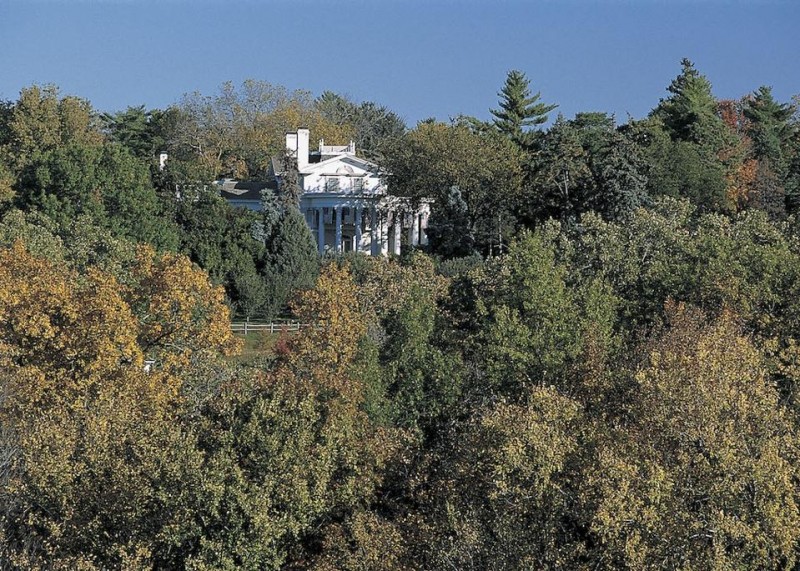
The Arbor Lodge Mansion at Arbor Lodge State Historical Park in Nebraska City is where Arbor Day was created.
The centerpiece of this 72-acre park is the Arbor Lodge Mansion, the Morton family’s original home. In the late 19th century, Nebraska’s largely treeless grasslands inspired Morton Salt Company founder J. Sterling Morton to advocate for mass afforestation, an effort that led to the first Arbor Day in 1872.
With 52 rooms and a vast collection of period artifacts, the mansion tells the story of how one family’s vision helped spark a nationwide conservation movement. The surrounding grounds feature an arboretum, Italian terraced garden, walking trails, a whispering bench, over 200 varieties of lilacs, a historic log cabin and a carriage house.
The Arcade and other venues, Cleveland, Ohio
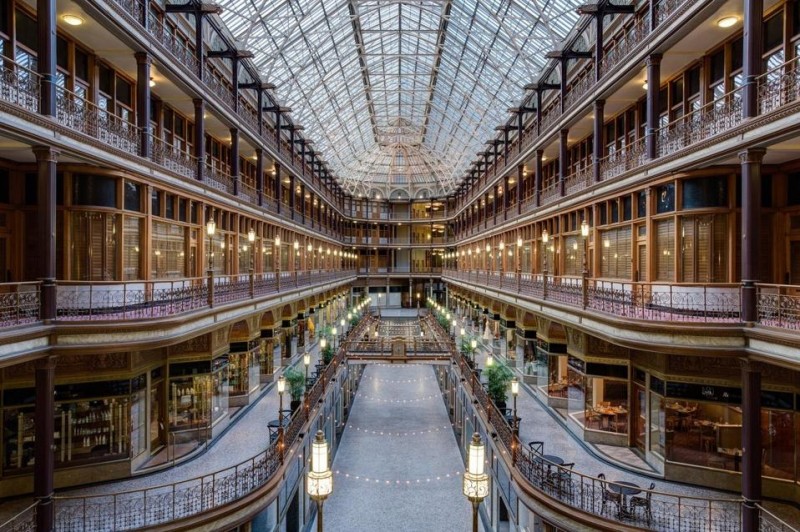
The Arcade in Cleveland was America’s first indoor shopping center.
Cleveland was quietly forging its own empire of industry, innovation and wealth during the late 19th and early 20th centuries. The city emerged as a powerhouse of steel, oil, shipping and finance — home to tycoons like John D. Rockefeller, Marcus Hanna, Amasa Stone and Samuel Mather.
Opened in 1890, at a cost of about $875,000, The Arcade was America’s first indoor shopping center, modeled after Milan’s Galleria Vittorio Emanuele II. After its conversion into a boutique hotel and shops, it remains a lavish Gilded Age landmark open to the public.
Founded in 1872 by 81 Cleveland leaders, The Union Club of Cleveland became a hub for social, cultural and civic life. It boasted members like Presidents Grant, Hayes, Garfield, McKinley and Taft. It remains active today and periodically opens its historic Euclid Avenue quarters for events and tours.
Cleveland’s Euclid Avenue was known as Millionaires’ Row—the “Showplace of America”—lined with grand mansions of industrial titans. Rising taxes and development in the early 20th century pushed these families to the suburbs, and many homes were demolished by the 1950s. Today, only a few survive, including the Brush mansion at Cleveland State University, with markers helping visitors imagine the original boulevard.
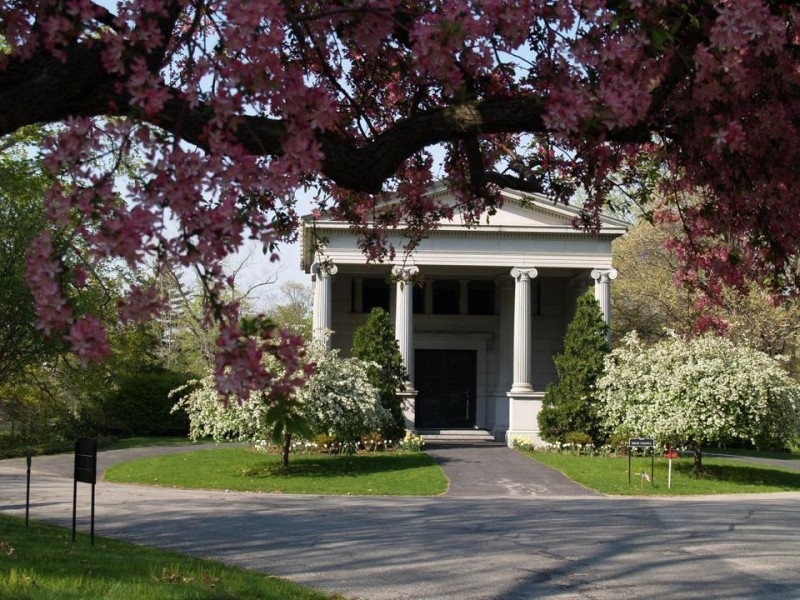
The interior of the Wade Memorial Chapel at the Lake View Cemetery in Cleveland was designed by Louis Comfort Tiffany.
Established in 1869, Lake View Cemetery is one of the finest remaining examples of a Victorian garden cemetery in the United States. Its winding roadways, landscaped settings and ornate mausoleums complement its role as the final resting place of figures like Rockefeller, Garrett Morgan and Leonard Hanna. Its centerpiece is the James A. Garfield Memorial, in addition to the Wade Memorial Chapel. Built in 1901 to honor Jeptha H. Wade, philanthropist and founder of the Western Union Telegraph Company, the chapel’s interior was designed by Louis Comfort Tiffany.
Lake Geneva, Wisconsin
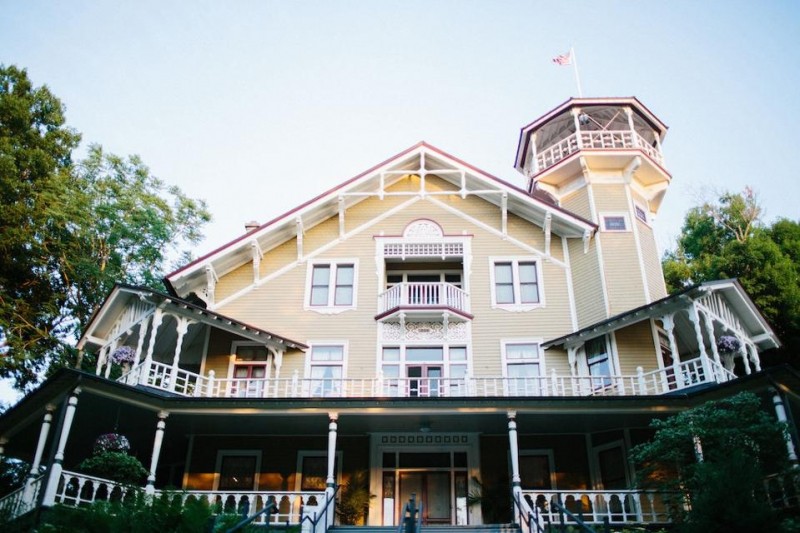
The Black Point Estate and Gardens is a reminder of Lake Geneva’s relation to the Gilded Age.
This resort town in southern Wisconsin rose to prominence in the late 19th century as a Gilded Age lakeside retreat for magnates of business and industry in Chicago. The Wrigleys, Wackers, Chapins, Drakes and Schwinns are among many wealthy families who built lavish summer mansions on the lake.
More than 100 of these homes still remain and can be viewed on boat tours. A 21-mile walking path circles the lake, providing a closeup look these historic estates.
Another way to experience this period in Lake Geneva is at Black Point Estate and Gardens, built by Chicago beer baron Conrad Seipp in 1888 as a family getaway. Today’s guests arrive at Black Point by boat, just as the family did in a bygone era.
Jekyll Island, Georgia
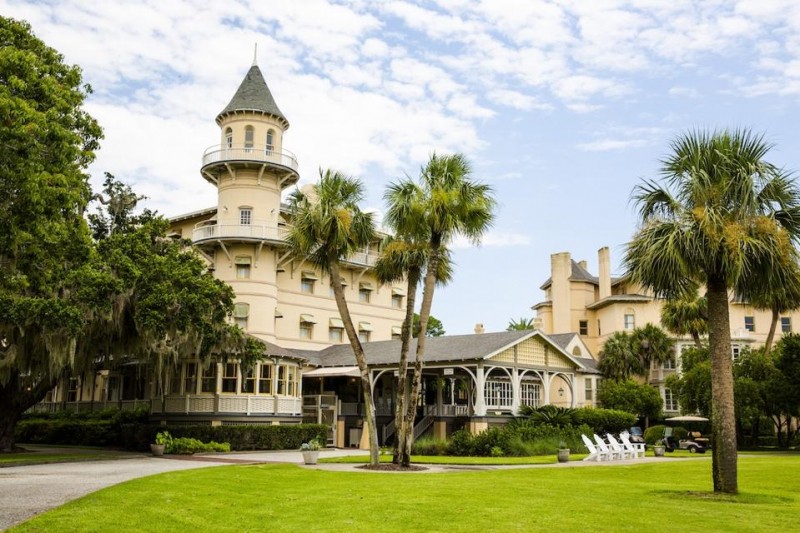
The Jekyll Island Club Resort in Georgia is where wealthy families came during winter months.
Jekyll Island’s connection to the Gilded Age is as the location of the Jekyll Island Club, a winter retreat for some of America’s wealthiest families. Up until World War II, the island served as a haven for the likes of the Rockefellers, Vanderbilts, and Pulitzers, who built lavish «cottages» there. Today, the property is known as the Jekyll Island Club Resort, which still holds these cottages.
Walk around the National Landmark Historic District or go on a Landmark Trolley Tour of this district that includes entry into a historic cottage.
Henry Morrison Flagler Museum, Palm Beach, Florida
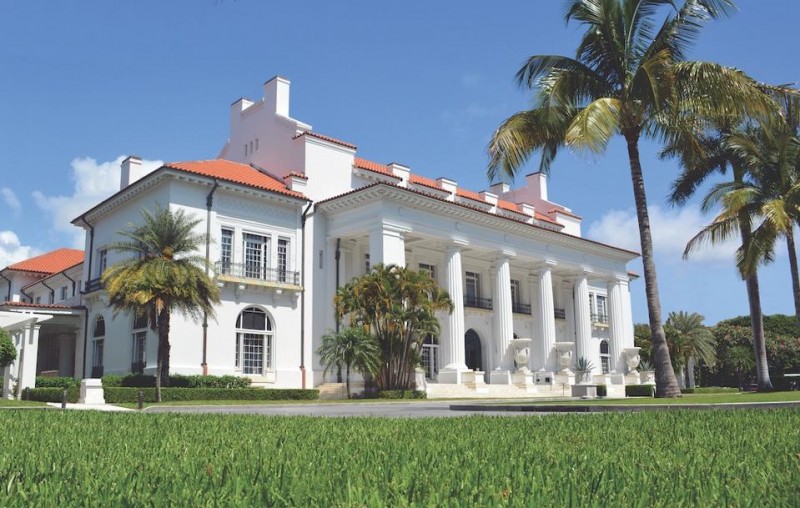
The Henry Morrison Flagler Museum in Florida was the winter residence of the man who modernized Florida.
Henry Morrison Flagler, an industrialist and a founding partner of Standard Oil, is credited as “Father of Modern Florida” with making the Sunshine State a major destination. In the late 19th century, Flagler built resort hotels from Jacksonville to Miami and the Florida Keys, linked by his Florida East Coast Railway.
His namesake museum was originally built as Whitehall, a winter home for him and his wife, Mary Lily Kenan Flagler. The couple resided here from 1902 until Henry’s death in 1913.
Flagler’s influence can still be felt in downtown St. Augustine. A free Flagler’s Gilded Age Tour, led by period costumed figures, tells stories of when the city became a playground for the rich and famous.
St. Augustine is the location for his final resting place, the Flagler Mausoleum. Other related sights include the former Hotel Ponce de Leon, now Flagler College, and the former Alcazar Hotel that’s now Lightner Museum and St. Augustine City Hall. Learn more through Flagler College Legacy Tours.
Frick Pittsburgh, Pennsylvania
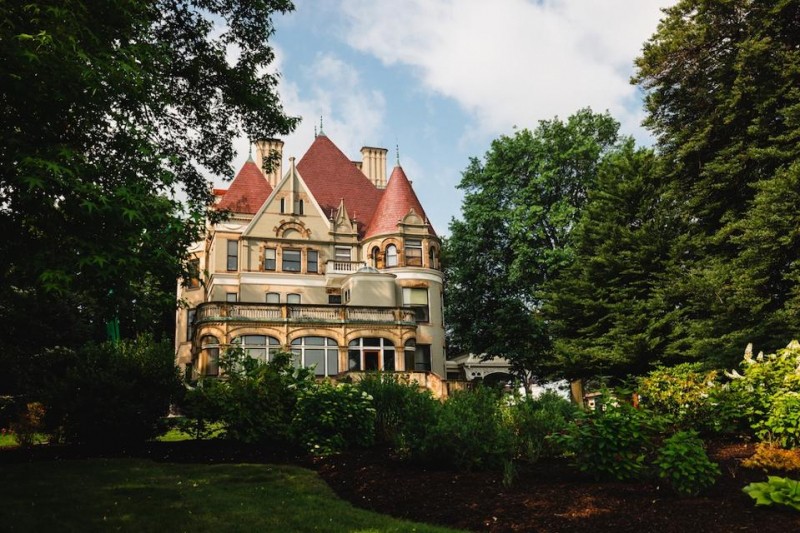
Clayton, the home of Henry Clay Frick, is included in the Frick Pittsburgh complex.
Pittsburgh during the Gilded Age was fueled by the industries of steel, coal and oil and the rise of industrialists Andrew Carnegie and Henry Clay Frick.
Frick Pittsburgh is a five-acre complex of museums and landscaped grounds, which includes Clayton, the home of Henry Clay Frick. Frick lived here from 1882 to 1905 and be sure to go on the museum tour, «Gilded, Not Golden,» Additionally, the Mansions on Fifth hotel and the Omni William Penn offer accommodations that serve as a testament to Gilded Age elegance.
Bramwell, West Virginia
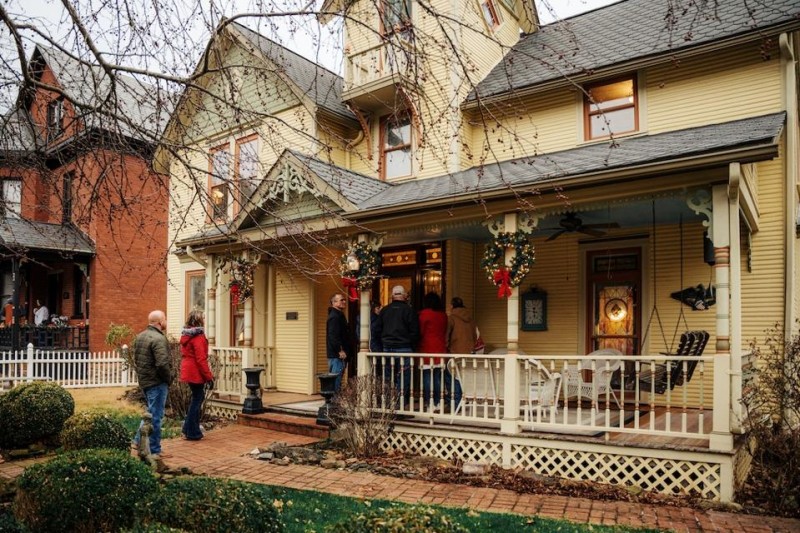
The West Virginia town of Bramwell was once an enclave of coal barons who built elaborate mansions.
At the height of the coal boom, Bramwell was home to more than a dozen millionaires who constructed turreted Victorians, English brick manors and sprawling estates with ballrooms, leaded stained-glass windows, copper roofing and even early indoor vacuum systems.
Bramwell’s entire downtown is listed on the National Register of Historic Places. Its brick-lined streets are a living museum, where preserved landmarks include the 1893 Bank of Bramwell, the 1889 Town Hall, and the old Bryant Pharmacy, now The Corner Shop, a beloved soda fountain serving milkshakes amid antique charm.
While many homes remain privately owned, guided mansion tours are offered twice yearly during the town’s spring and Christmas Heritage events. Bramwell is a stop along the National Coal Heritage Trail and includes an interpretive center sharing real stories of the region’s coal barons, company towns, and industrial legacy.
Other Gilded Age Sites In The U.S.
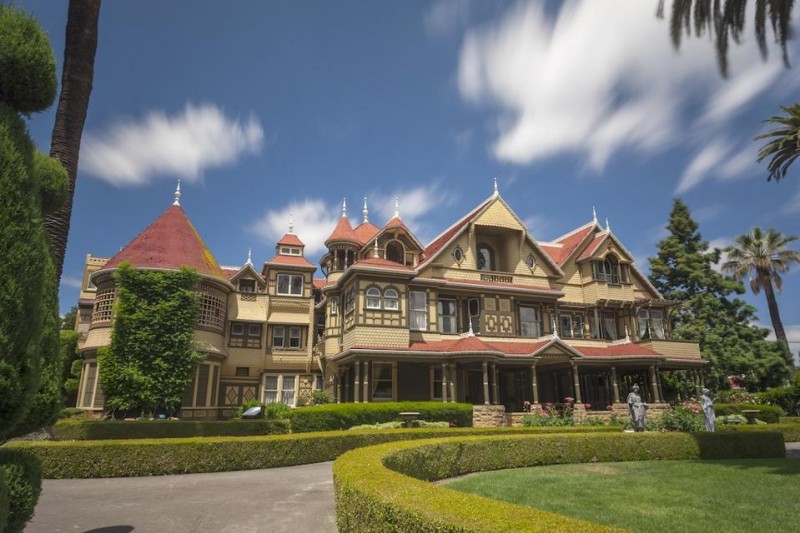
The Winchester Mystery House in San Jose is a unique and mysterious mansion, constructed by Sarah Pardee Winchester, the heiress to the Winchester Repeating Arms fortune. Building began in 1884 and continued for 38 years, until Sarah’s death in 1922. The mansion is famous for its bizarre, Victorian-style architecture, featuring strange design elements meant to appease restless spirits, believed to be the victims of the Winchester Rifle.
Other Notable Gilded Age Mansions
— Bellosguardo: A 24-acre Italianate villa in Santa Barbara, once the summer retreat of Huguette Clark, heiress to the Clark fortune. The villa is a symbol of the Gilded Age and was featured in the bestseller Empty Mansions.
— Hayes Mansion: A Mission Revival estate in San Jose, originally owned by the Hayes family, influential in agriculture, politics, and media in the region. Now part of the Curio Collection by Hilton, it remains a piece of the city’s rich history.
Plan Your Visit to the Winchester Mystery House
If you’re looking for a fascinating vacation, book a tour of the Winchester Mystery House. Explore the beautiful yet bizarre mansion with its strange design, and uncover its hidden secrets on a daily guided tour. Don’t miss out on this captivating experience in San Jose!
